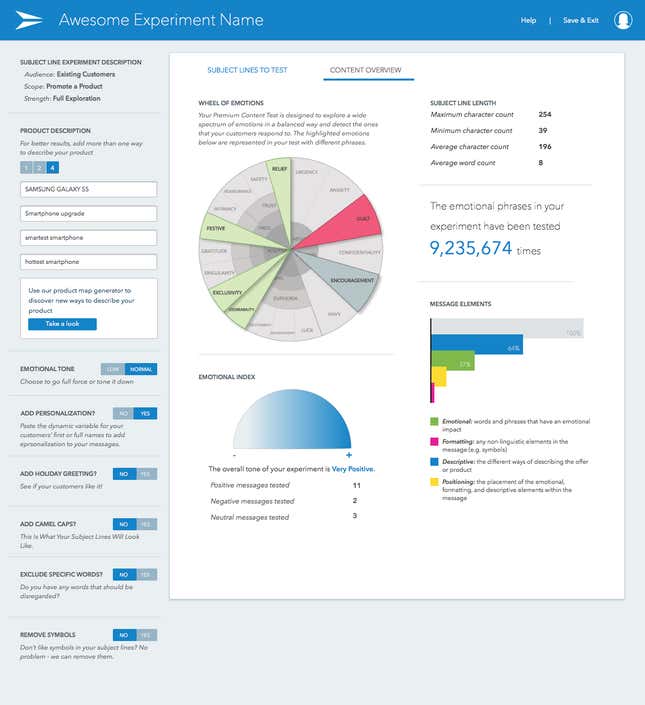Robots are starting to take our jobs on the factory floor, around the home, and even in the newsroom. One company, Persado, has its sights set on advertising agencies. It has figured out how to use machine learning to manipulate our emotions to sell us more things. The next advertisement you see online could well have been written by a computer.
Persado spent eight years building up a database of half a million phrases commonly used in advertisements, and two years building a computer program to use the database to write advertisements, according to Julia Spano, Persado’s marketing director. The company categorized its thousands of phrases by their emotional content. On the base level, the categorization is just whether someone is likely to respond positively, negatively or neutrally to a message. Then the phrases were subdivided into emotions, such as gratitude, excitement, or urgency. The program learns how language is perceived by consumers, and constantly updates itself to more effectively communicate specific emotions.
The company will soon be offering a new layer of service to its clients: statistical analysis of the emotions its messages are conveying. Persado’s new wheel of emotions shows what sentiments work best for any given advertising campaign, based on a test shown to a small sample of a client’s consumers. Clients can change what emotions the program hits on the wheel—perhaps they want to convey “gratitude” this time round, more than “festive”—but Persado recommends letting the program choose the emotions at first.

The program runs a test of its messages against one that was written by a human copywriter. Spano tells Quartz that, on average, the messages chosen by the computer have a 95% probability for performing better than something written by a human.
Persado boasts some high-profile clients, including Verizon, American Express, LivingSocial, and Best Buy. Some companies, including LivingSocial, now trust the program outright, and don’t bother with getting a human to write a version for comparison, Spano says.
On the test campaign Spano showed Quartz, the program analyzed over 76 million combinations of tones, sentiments and phrasings to figure out which it believed—based on all the past campaigns it had completed—which would work best for an email about a discount sale. The only action a human needed to take was clicking “ok” on the computer’s chosen message.
Right now, Persado is used to write adverts for digital mediums—like emails, banner ads and web pages—where the effectiveness of the messages can be measured in real time. But in the future, more ads could be written by computers. It’s not inconceivable that Persado could be used for billboards or in magazines, or “any time you’re trying to get an action out of someone,” Spano says. “The emotional intelligence we have far surpasses anyone else out there right now,” she adds.
But this doesn’t the mean computers will kill off the advertising agencies altogether: “We’re never going to replace a creative agency that creates something like ‘Just Do It,’” Spano says. Although Persado’s program might be as personal and emotional a copywriter as a human, it’s probably going to be a while before computers completely take over our personal space.
